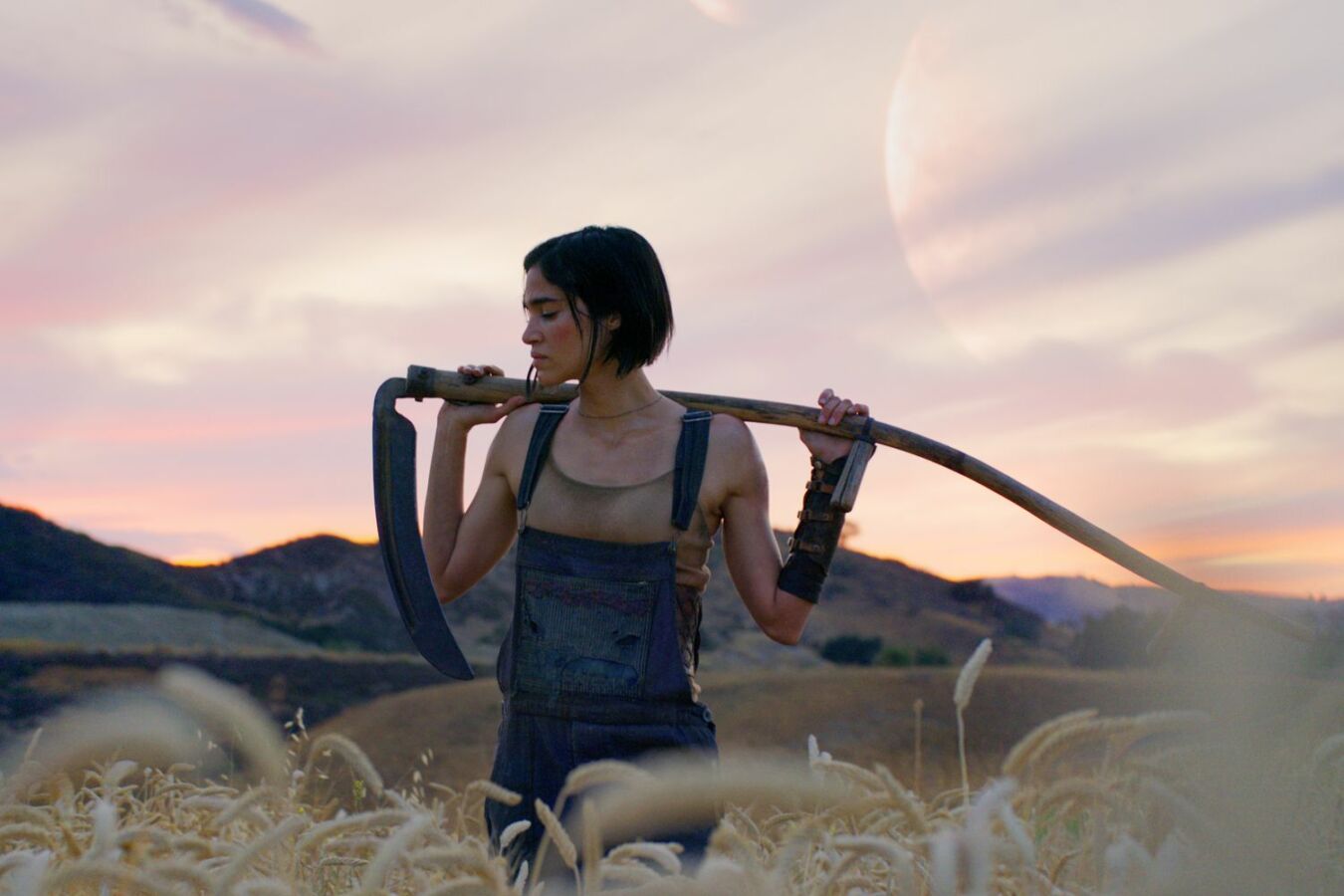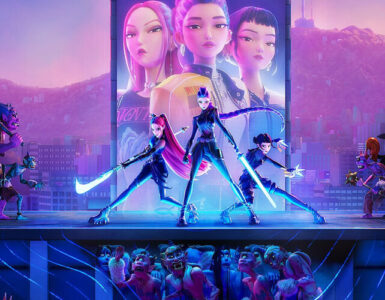This interview has been edited for clarity.
It’s publicly known that Zack Snyder’s Rebel Moon was originally conceived – and rejected – as a Star Wars project but forget the familiar galaxies and intergalactic battles as Snyder’s two-part Netflix film is set to rip open a new portal in sci-fi cinema, hoping to lure audiences hungry for science fiction that moves beyond galaxies far, far away, and beyond the final frontier.

The visionary director, who shot to fame with 2007’s 300, a film that adapted Frank Miller’s graphic novel of the same name, has more recently been a lightning rod for controversy, having built the DC Extended Universe with 2013’s Man of Steel, only to have the franchise implode due to a series of events that were beyond Snyder’s control. Still, he found a supporter in Netflix, who supported his audacious new sci-fi vision that boldly ventures into new interstellar territories in two parts, with Rebel Moon – Part One: A Child of Fire releasing this month.
Having journeyed from the exploratory missions of Star Trek to the far reaches of the galaxy in Star Wars, and delved into the complex worlds of Dune and the dystopian futures of Blade Runner, it looks like audiences are fully on board to embark on a groundbreaking odyssey to Rebel Moon, even if critics have started to lambast the film as being overindulgent.

But critical assessment has never been the concern of the filmmaking auteur, whose vision for Rebel Moon transcends conventional space tales. “It’s about a group of farmers on a distant planet who get visited by this evil empire that wants them to supply food to their soldiers and they’re faced with the choice of whether to do that, or whether to fight back,” Snyder shares at the film’s recent press conference that Geek Culture attended.
“They would have to figure out whether to go out into the galaxy and find soldiers, or try and fight for themselves.” Rooted in his lifelong passion for genre-defining classics, the film is a culmination of Snyder’s cinematic influences, ranging from George Lucas’ 1977 epic space opera, Star Wars, to Akira Kurosawa’s Japanese epic samurai film, Seven Samurai.

And in Snyder’s literal world of universe building, he had the perfect partner in his wife and producer, Deborah Snyder, who, having produced the bulk of her husband’s films, had the daunting responsibility of delving into the intricate, thrilling and daunting process of establishing a new galaxy that lived in Snyder’s head.
“It was exciting for us to create something wholly original. But that also made it so challenging, because there was nothing that existed, everything just existed in Zack’s head. So we had to figure out how to make that come alive,” she shares. This ambition was not just about crafting a story, but about forging an entire universe from scratch. Snyder highlights the meticulous attention to detail that went into every aspect of the film’s production.

“We created this world, and different languages. It’s so important that even if you didn’t see it, you believed that just around the corner, there was a world that existed. That attention to detail, I think, makes the world feel real,” she explains.
The team’s commitment to world-building has even extended to developing unique languages and intricate lore, with environments that feel lived-in and characters that resonate with a sense of realness.
But a real, lived-in world is not enough to tell a story and at an age where galactic superheroines like Ahsoka Tano from Star Wars have dominated the silver screens, Rebel Moon introduces its own stellar female protagonist, Kora, played by Sofia Boutella, who stands out with her unique blend of heroism and complexity. Boutella, familiar with the sci-fi genre from her role as the fierce space warrior Jaylah in Star Trek Beyond, imbues Kora with a blend of athleticism and emotional resonance.

“Kora is a warrior and a fighter from such a young age, I didn’t want to make any mistake when it came to that element,” Boutella explains. “I wanted to learn how Kora ran and walked with a gun.” Her approach brings a unique dynamism to the character, and will hopefully turn Kora into a memorable addition to the pantheon of space heroines, from Princess Leia from Star Wars, to Ellen Ripley from the Alien franchise.
The film also benefits from the cultural richness brought by its diverse cast, as South Korean actress and photographer Doona Bae (Sense8) infuses her character, Nemesis, with subtle touches of her Korean heritage, particularly in the costume design.

“Nemesis’ costumes are inspired by Korean traditional gowns, especially the hats,” Bae observes, comparing her head garments to the same ones used in Netflix’s Kingdom, the South Korean period horror series where she plays the female lead.
“Nemesis went through my body and my soul while she was played, because I was born and raised in Korea, and it’s naturally in me, so she couldn’t escape.”
And no sci-fi epic can be without its evil protagonist, which the film found in Ed Skrein’s Nazi-styled Admiral Atticus Noble, the key to every underdog story that the main characters must defeat.

“We’re talking about farmers going against a huge army with technology they could not imagine,” Skrein highlights the crucial role his character plays in establishing the odds stacked against the protagonists. “It’s a very one-sided battle and you can’t have underdogs without the threat. Admiral Atticus Noble is there to provide this terrible threat to the underdogs. The way I provided it was being as menacing, mean, evil, and horrible as possible.”
Skrein’s dedication to crafting a formidable adversary adds depth to the narrative, setting a dramatic backdrop against which the heroes’ journey unfolds. His performance not only intensifies the sense of peril but also underscores the themes of resilience and courage that lie at the heart of the film.

While most new IP films take their time in establishing new lore, the Snyders don’t have that luxury, as the follow-up, Rebel Moon – Part Two: The Scargiver, is scheduled to be released on April 19, 2024, which meant that the team had to constantly maintain a narrative consistency within the Rebel Moon universe, which was apparent during the 153 days of shooting for the duology.
“You don’t want to find yourself in a future scenario where you are breaking a rule that you established. So you just have to treat the rules carefully as you make them, because it’s kind of written in stone.” Zack elaborates.

Drawing inspiration from his very own visually striking films like 300, Man of Steel, Justice League, and Army of the Dead, Snyder’s newest film is imbued with a distinctive visual style and kinetic energy. “There’s a lot of sword fighting and action that bear a semblance to those in my earlier films. I would say the texture and sort of aesthetic are the main influences, they’re very strong.” While specific shots in Rebel Moon may not directly reference his past films, the overall stylistic essence is undeniably Snyder-esque.
Rebel Moon, a cinematic odyssey crafted with passion and innovation, culminates in an experience that transcends the typical bounds of science fiction, and for long-time fans of Snyder, don’t worry as the filmmaker is already committed to releasing a longer director’s cut of both films, for those who can’t get enough of his Rebel yell. The streamer and director have also looked into expanding the franchise beyond the visual, because how often does a filmmaker get to also be the architect of his own little galaxy?
Smiled Snyder on his faith in delivering what audiences and fans can expect, “We have a novelization, a graphic novel, and a podcast. We’d have to be very careful about the work that we are doing.”













